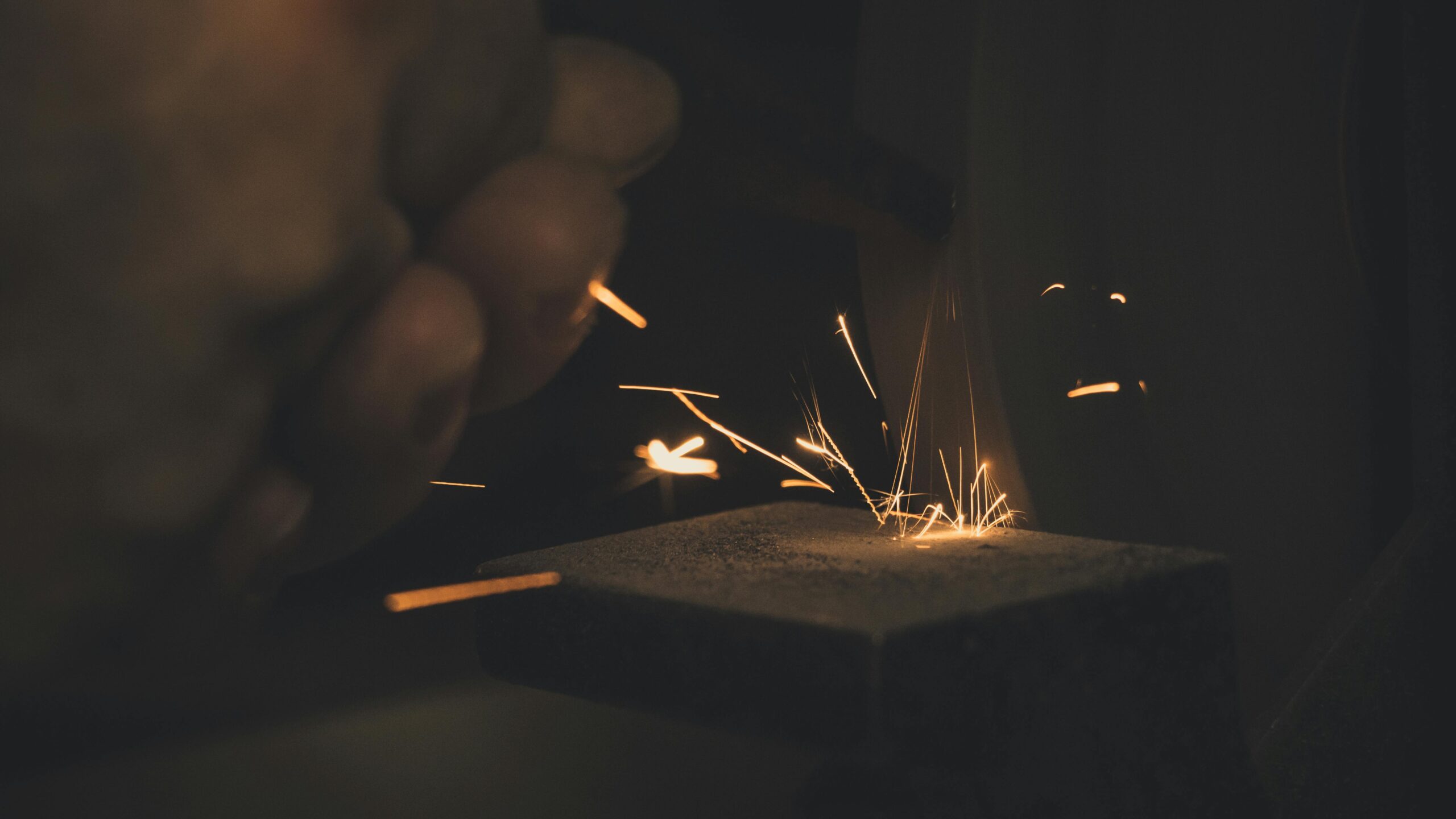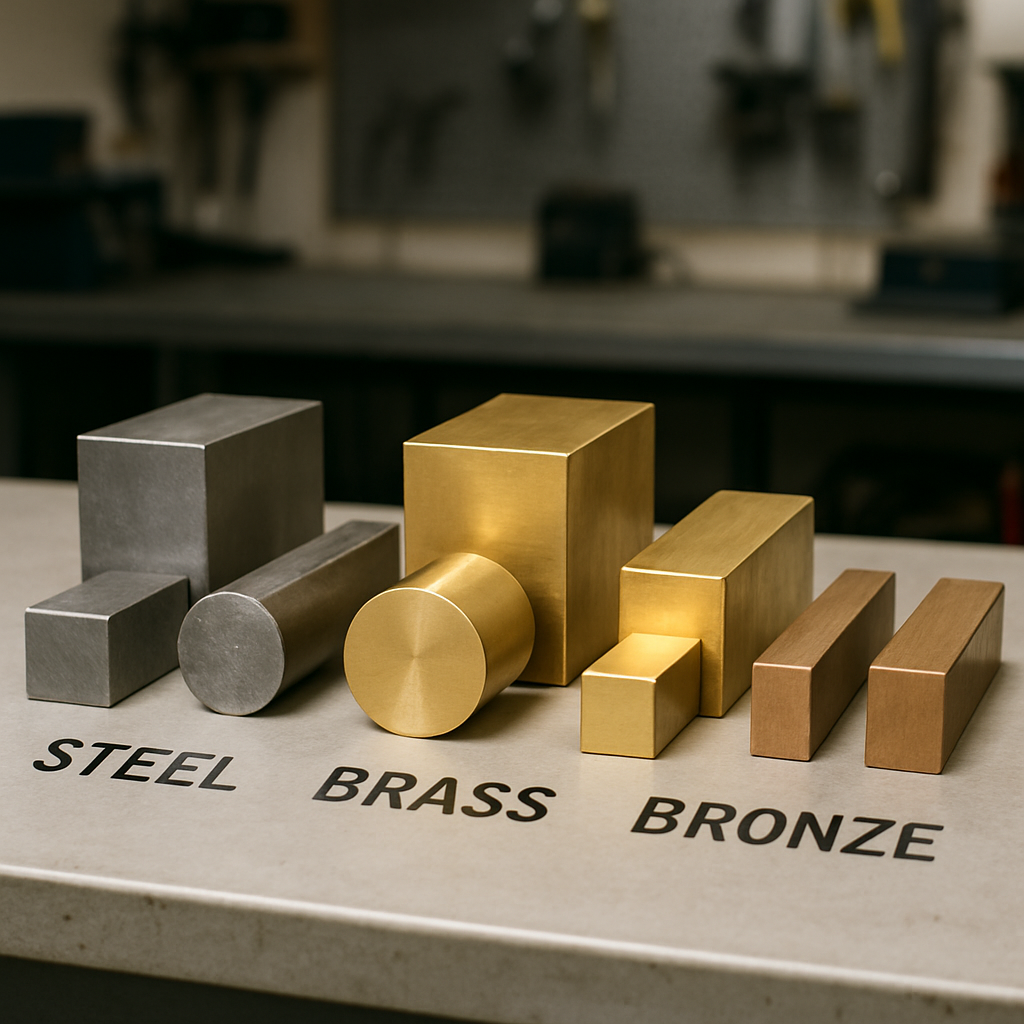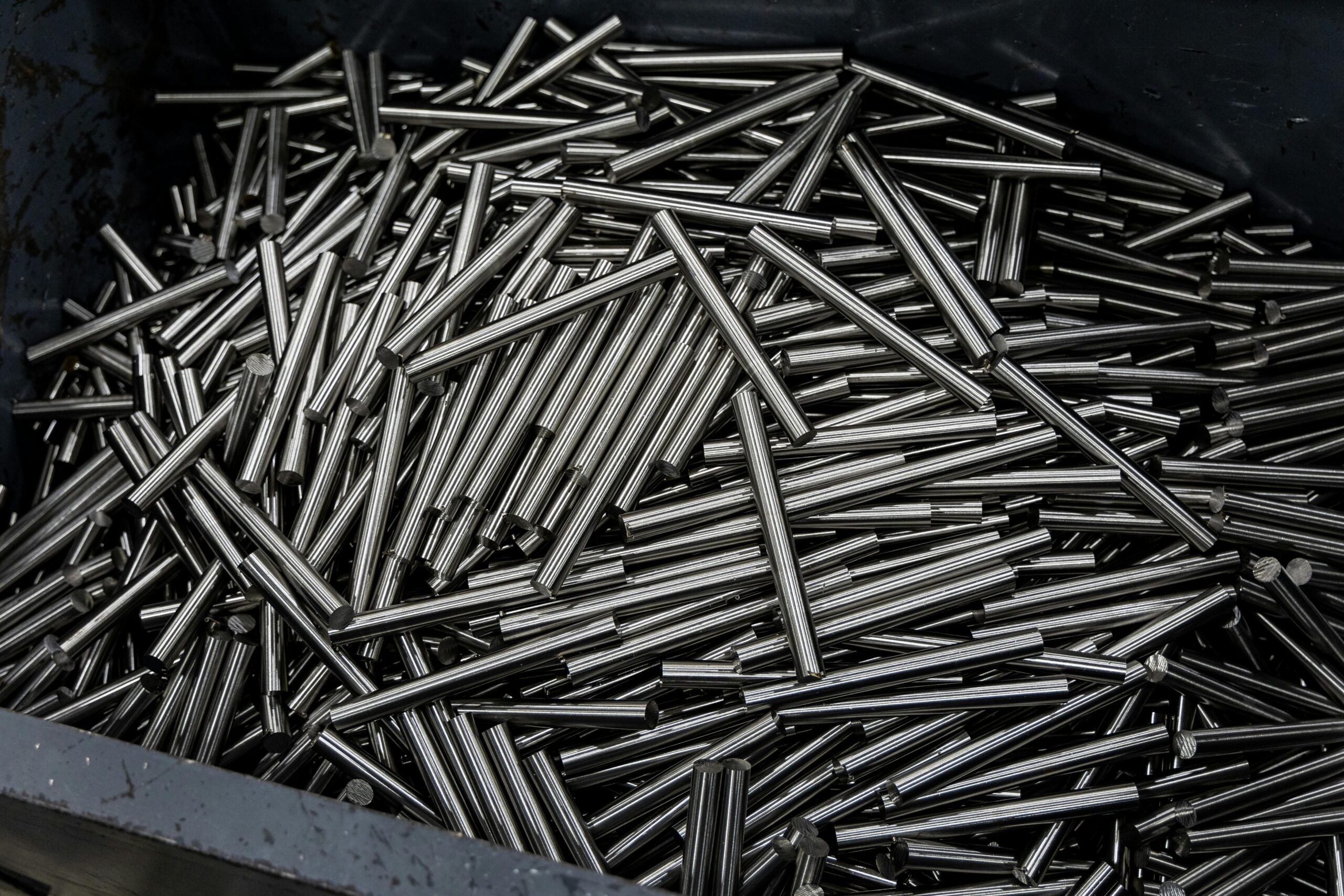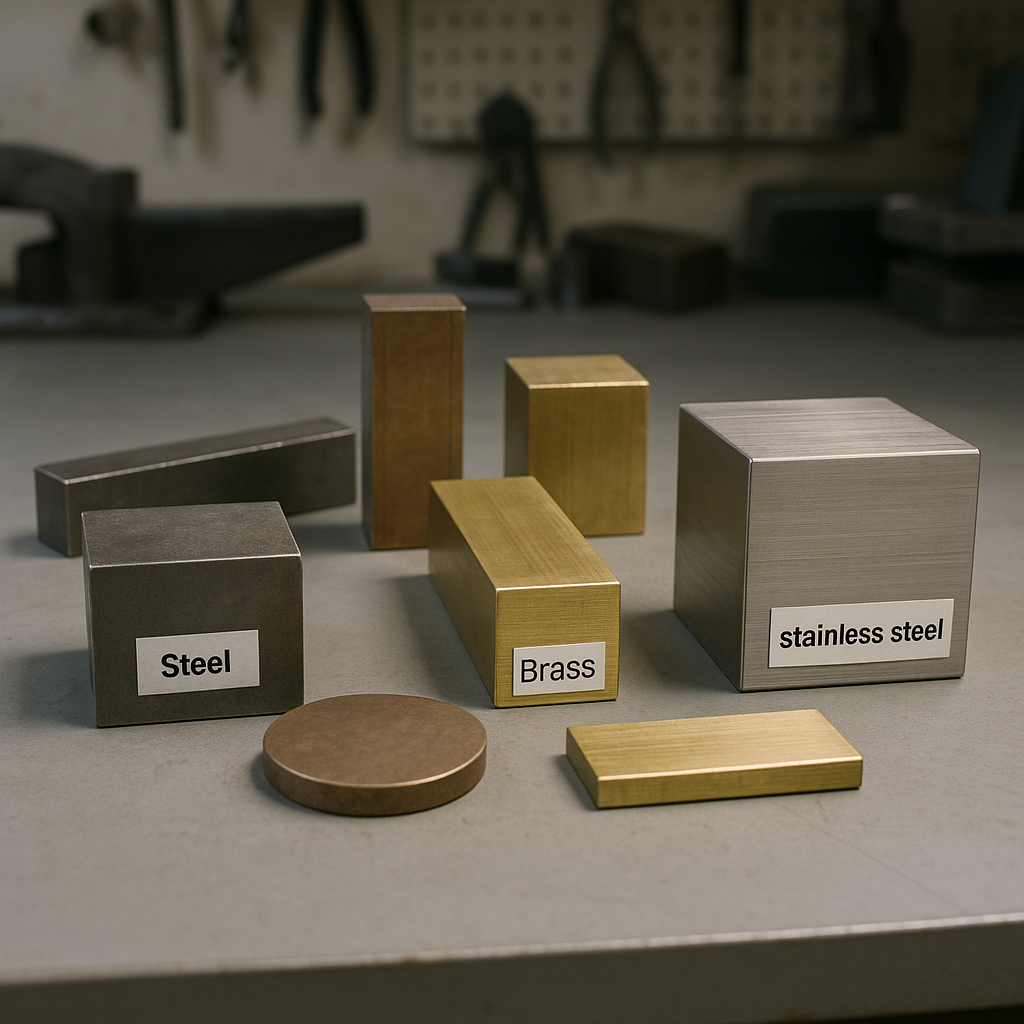5901 Botham Jean Blvd, Dallas, TX 75215
What Are Metal Alloys? — Everything You Need to Know
June 29, 2025Metal alloys are materials formed by combining two or more elements, with at least one being a metal. They represent a crucial advancement in materials science, designed to enhance desirable properties while reducing the limitations of pure metals.
Alloys operate on a straightforward principle. By mixing different elements, the atomic arrangement limits movement, making the material stronger than pure metals. For instance, steel combines iron with a small amount of carbon to create a material much stronger than pure iron.
We encounter common examples daily. Brass, an alloy of copper and zinc, is more durable and workable than either metal individually. Aluminum alloys used in aircraft offer strength without excessive weight. Steel, used in everything from buildings to kitchen utensils, comes in numerous variations, each with different properties based on its composition.
How are Metal Alloys Created?

Metal alloys are produced through various methods, each offering unique advantages for specific applications. The chosen production method significantly impacts the properties and quality of the final alloy material.
Conventional Melting Process
The traditional method for creating metal alloys involves melting the constituent metals together. This process begins with precise measurement of raw materials to achieve the desired alloy composition.
The metals are heated in high-temperature furnaces until they reach their melting points. For alloys with elements having significantly different melting temperatures, the metals with higher melting points are typically melted first. The molten metals are then mixed to create a homogeneous liquid, carefully controlled to prevent oxidation.
Once thoroughly mixed, the molten alloy is poured into molds to cool and solidify under controlled conditions. This cooling rate directly affects the microstructure and properties of the alloy. In many commercial operations, further heat treatment enhances specific characteristics.
Powder Metallurgy Method
Powder metallurgy offers an alternative to traditional melting, particularly beneficial for alloys containing metals with vastly different melting points or those prone to excessive segregation during conventional casting.
This process starts by creating fine metal powders of the constituent elements. These powders are precisely weighed and blended to achieve the target composition. The mixed powders are then compressed in dies under high pressure to form a compact shape.
The compacted material undergoes sintering—heating to temperatures below the melting point, high enough to bond the particles together. During sintering, atomic diffusion occurs between the powder particles, creating a solid mass without complete melting. This method allows for better control of the final microstructure and produces alloys with more uniform properties.
Ion Implantation Technology
Ion implantation is a highly specialized and precise method for creating surface alloys. Unlike bulk production methods, ion implantation modifies only the surface layer of an existing metal.
In this process, ions of the alloying element are accelerated in an electric field to high energies. These ions bombard the target metal surface, penetrating to various depths. The ions become embedded within the crystal structure of the base metal, effectively creating a thin alloy layer.
The concentration and depth of the implanted ions can be precisely controlled, making this method valuable for semiconductor fabrication and specialized surface modification applications. While limited to surface layers, ion implantation can create alloy compositions that are impossible to achieve through conventional methods.
This method is especially useful when only the surface properties of a material need modification, without altering its bulk characteristics.
What are the Key Types of Metal Alloys?

Metal alloys are combinations of two or more elements designed to enhance properties like strength and corrosion resistance, offering advantages over pure metals. Understanding key metal alloys is essential for choosing the right material for specific applications.
Steel alloys are prevalent in industrial applications globally. By combining iron with carbon (typically 0.1-2%), steel provides exceptional strength and durability. Variants include low carbon (mild steel) for construction, medium carbon for machinery, and high carbon for tools and cutting implements. Adding chromium (at least 10.5%) creates stainless steel with superior corrosion resistance, ideal for kitchen equipment, medical devices, and architectural uses.
Aluminum alloys are known for their lightweight nature and impressive strength-to-weight ratios. Series 6000 (aluminum-magnesium-silicon) alloys excel in architectural extrusions and automotive parts, while Series 7000 (aluminum-zinc) offers aerospace-grade strength. Their ability to resist corrosion through the formation of a protective oxide layer makes aluminum alloys suitable for transportation, packaging, and construction applications where weight reduction is crucial.
Brass alloys, combining copper with zinc, offer excellent formability and machinability. Zinc content (typically 5-45%) influences the alloy’s properties. Yellow brass (30% zinc) is used for decorative hardware, while naval brass includes tin for enhanced corrosion resistance in marine environments. Brass’s antimicrobial properties make it valuable for doorknobs and handrails in public buildings.
Bronze alloys traditionally combine copper with tin, resulting in materials known for exceptional wear resistance and low friction properties. Modern bronzes often include elements like aluminum, silicon, or phosphorus. Aluminum bronze offers excellent corrosion resistance in seawater, critical for marine propellers and valves. Phosphor bronze provides outstanding springiness for electrical contacts and musical instruments.
Titanium alloys are at the premium tier of structural metals. Their extraordinary strength-to-weight ratio surpasses steel while offering excellent corrosion resistance. Grade 5 titanium (Ti-6Al-4V), containing 6% aluminum and 4% vanadium, is the most widely used for critical aerospace components, medical implants, and high-performance sports equipment. These alloys retain their properties at extreme temperatures, making them invaluable for aircraft engines.
Nickel alloys are notable for their exceptional heat and corrosion resistance. Inconel (nickel-chromium-iron) withstands extreme temperatures in gas turbines and chemical processing equipment, while Monel (nickel-copper) resists seawater corrosion, making it ideal for marine applications. The versatility of nickel alloys makes them essential in environments too harsh for other materials.
Each metal alloy type offers distinct advantages for specific applications. The recycling industry recognizes these differences when processing scrap metals, using specialized sorting techniques to maintain material purity and preserve the valuable properties of each alloy type.
What are the Advantages of Using Metal Alloys?

Metal alloys outperform pure metals in almost every measurable property. Their irregular atomic structure helps resist deformation when under stress. Atoms of different sizes combine to disrupt the uniform patterns found in pure metals, preventing atomic layers from sliding over each other easily, which significantly increases strength.
Corrosion resistance is a notable advantage of alloys. Pure metals often react easily with their surroundings, leading to rust and deterioration. Alloys include less reactive elements that form protective surface layers. These passive oxide films shield the base material from further corrosion, which dramatically extends product lifespan.
The durability of alloys comes from their enhanced hardness and resistance to wear. Components made from alloys withstand greater environmental stress and physical demands without deforming or breaking, making them far less susceptible to scratching, denting, and other forms of damage compared to pure metals.
Tailored Properties for Specific Applications
The ability to engineer precise material properties is perhaps the most valuable advantage of metal alloys. Manufacturers can adjust compositions to achieve specific characteristics needed for particular applications, a customization that isn’t possible with pure metals, which have fixed properties.
In aerospace applications, the weight-to-strength ratio is crucial. Aluminum and titanium alloys provide exceptional strength while maintaining significantly lower density than many pure metals. Aircraft manufacturers rely on specialized alloys like 7075 aluminum for fuselages and structural components where weight reduction directly impacts fuel efficiency and performance.
Thermal properties can be precisely controlled through alloying. Unlike pure metals with a single melting point, alloys typically melt across temperature ranges. This characteristic makes them ideal for high-temperature applications in engines, power plants, and industrial equipment where thermal stability is essential.
Industry-Specific Benefits
In construction, structural integrity demands materials that won’t fail under load. Steel alloys provide the necessary strength for supporting heavy weights in buildings and infrastructure. Bridges and tunnels benefit from titanium alloys that combine strength with excellent corrosion resistance. In environments with chemical exposure, nickel-based alloys offer superior protection in pipes and storage tanks.
The electronics industry requires materials with specific electrical conductivity properties. Copper alloys provide high conductivity for efficient electron transfer in circuits and components. Alloying elements can be added or adjusted to achieve precise conductivity levels tailored to specific electronic applications.
Medical applications greatly benefit from alloy properties. Stainless steel alloys offer non-corrosive, non-toxic materials for surgical tools and bone pins. Titanium alloys create lightweight, strong components for skeletal supports and dental implants. Their biocompatibility makes these alloys ideal for long-term implantation in the human body.
Even everyday consumer products showcase alloy advantages. The stainless steel in your kitchen cutlery resists corrosion while maintaining its attractive appearance. Aluminum foil combines lightweight properties with excellent formability. Brass instruments produce their distinctive sounds due to the acoustic properties of copper-zinc alloys.
The cost-effectiveness of alloys often surpasses that of pure metals. By combining smaller amounts of expensive metals with larger quantities of more affordable ones, manufacturers create materials with premium properties at reduced costs. This economic advantage makes alloys the practical choice for mass production across diverse industries.
Conclusion: The Impact of Metal Alloys on Modern Industry

Metal alloys have fundamentally transformed modern industry by offering materials with superior properties compared to pure metals. Their unique combinations of strength, durability, and specialized characteristics have advanced sectors such as construction, transportation, electronics, and medical technology. These materials enable manufacturers to create products that withstand extreme conditions while maintaining optimal performance.
As materials science progresses, new alloy formulations are continually being developed. These innovations promise more sustainable and efficient solutions for technological challenges across various industries. For all your metal recycling needs related to alloys and other valuable materials, contact Okon Recycling at 214-717-4083.
